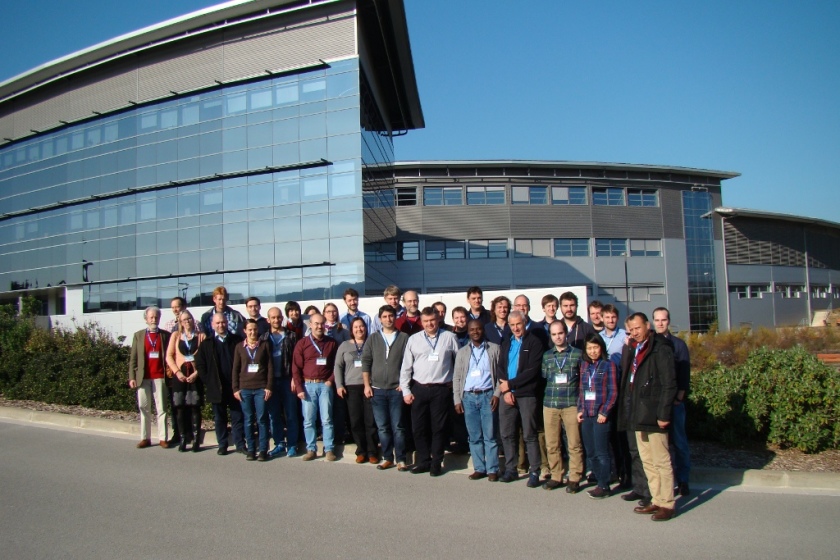Common platform for macromolecular crystallography at European synchrotrons

MXcuBE Meeting from 1st - 2nd of December 2015 at Alba, Barcelona. The meetings make sure that the devenlopment of MXcuBE3 closly fits to the needs of the users.
Photo: Jordi Juanhuix/ALBA
Researchers use high-intensity X-ray light from synchrotron radiation sources to decipher the structures of biological molecules and thus the blueprints of life. A cooperation agreement has been effective since 2012 to establish common software standards at several European sources. Its aim: The eight synchrotrons involved want to create user-friendly, standardised conditions at the 30 experimental stations for macromolecular crystallography, which will greatly facilitate the work of research groups. In the new project “MXCuBE3”, the existing software platform is being adapted to include the latest developments in technology.
Many of the beamlines for macromolecular crystallography have been extensively modernised at various synchrotrons over the past few years. With new equipment, such as the latest high-resolution detectors, this opens up all new possibilities for experimentation. The common software platform MXCuBE2 now has to be adapted as well to keep up with this trend. The Curatorship has accordingly called for a new, overhauled version to be developed. The software solution MXCuBE3 will allow users to control their experiments via web applications. The upgrade will also guarantee MXCuBE3 will continue to run on computers with future operating systems, and will improve the connection to the sample database ISPyB.
Involved in the cooperation are the Helmholtz-Zentrum Berlin, the ESRF, the European Molecular Biology Laboratory, Global Phasing Limited, MAX-VI-Lab in Sweden, SOLEIL in France, ALBA in Spain and DESY.
Read up on this in more detail in the ESRF magazine
(sz)
https://www.helmholtz-berlin.de/pubbin/news_seite?nid=14380;sprache=en
- Copy link
-
Energy of charge carrier pairs in cuprate compounds
High-temperature superconductivity is still not fully understood. Now, an international research team at BESSY II has measured the energy of charge carrier pairs in undoped La₂CuO₄. Their findings revealed that the interaction energies within the potentially superconducting copper oxide layers are significantly lower than those in the insulating lanthanum oxide layers. These results contribute to a better understanding of high-temperature superconductivity and could also be relevant for research into other functional materials.
-
Electrocatalysis with dual functionality – an overview
Hybrid electrocatalysts can produce green hydrogen, for example, and valuable organic compounds simultaneously. This promises economically viable applications. However, the complex catalytic reactions involved in producing organic compounds are not yet fully understood. Modern X-ray methods at synchrotron sources such as BESSY II, enable catalyst materials and the reactions occurring on their surfaces to be analysed in real time, in situ and under real operating conditions. This provides insights that can be used for targeted optimisation. A team has now published an overview of the current state of knowledge in Nature Reviews Chemistry.
-
BESSY II: Phosphorus chains – a 1D material with 1D electronic properties
For the first time, a team at BESSY II has succeeded in demonstrating the one-dimensional electronic properties in phosphorus. The samples consisted of short chains of phosphorus atoms that self-organise at specific angles on a silver substrate. Through sophisticated analysis, the team was able to disentangle the contributions of these differently aligned chains. This revealed that the electronic properties of each chain are indeed one-dimensional. Calculations predict an exciting phase transition to be expected as soon as these chains are more closely packed. While material consisting of individual chains with longer distances is semiconducting, a very dense chain structure would be metallic.
